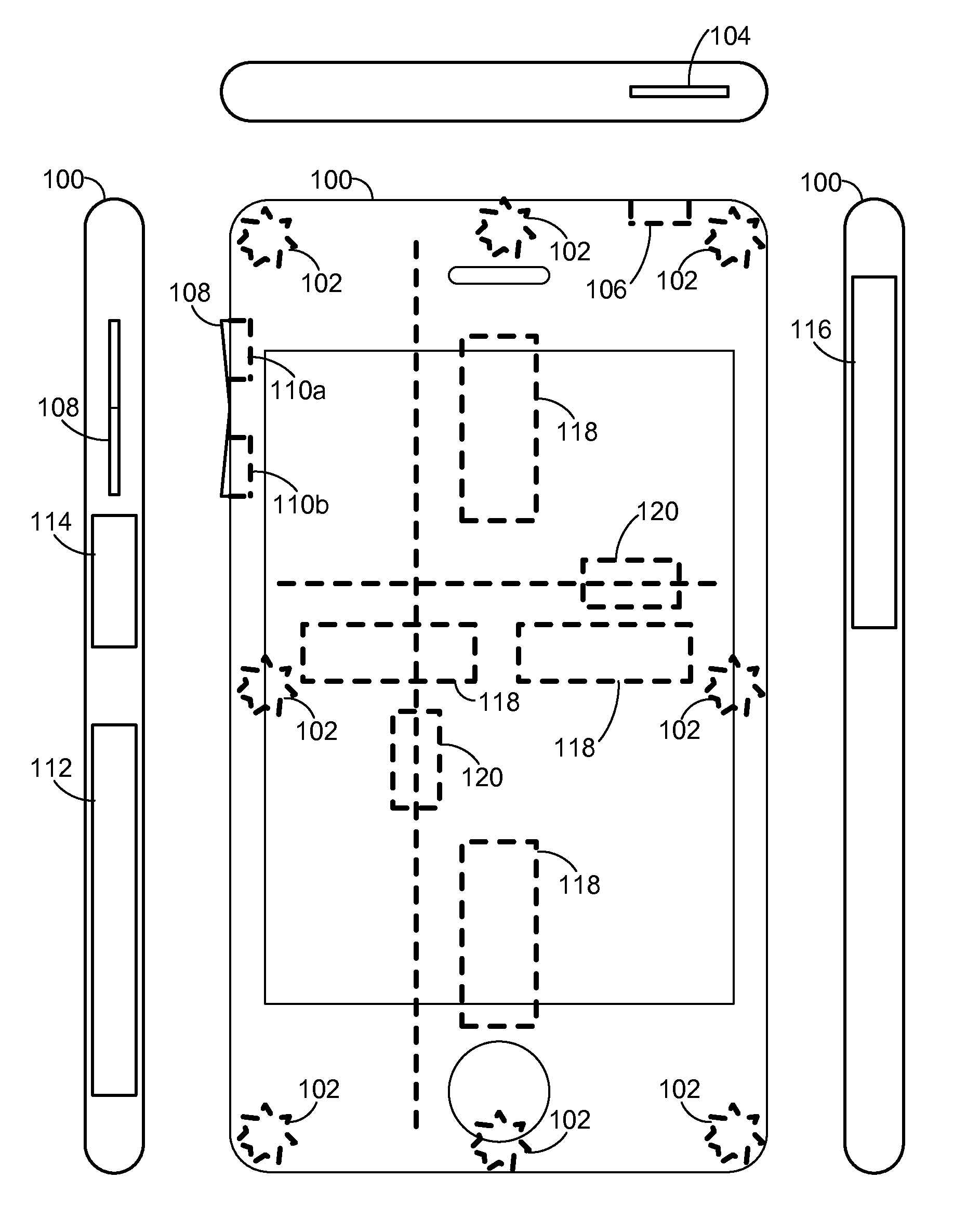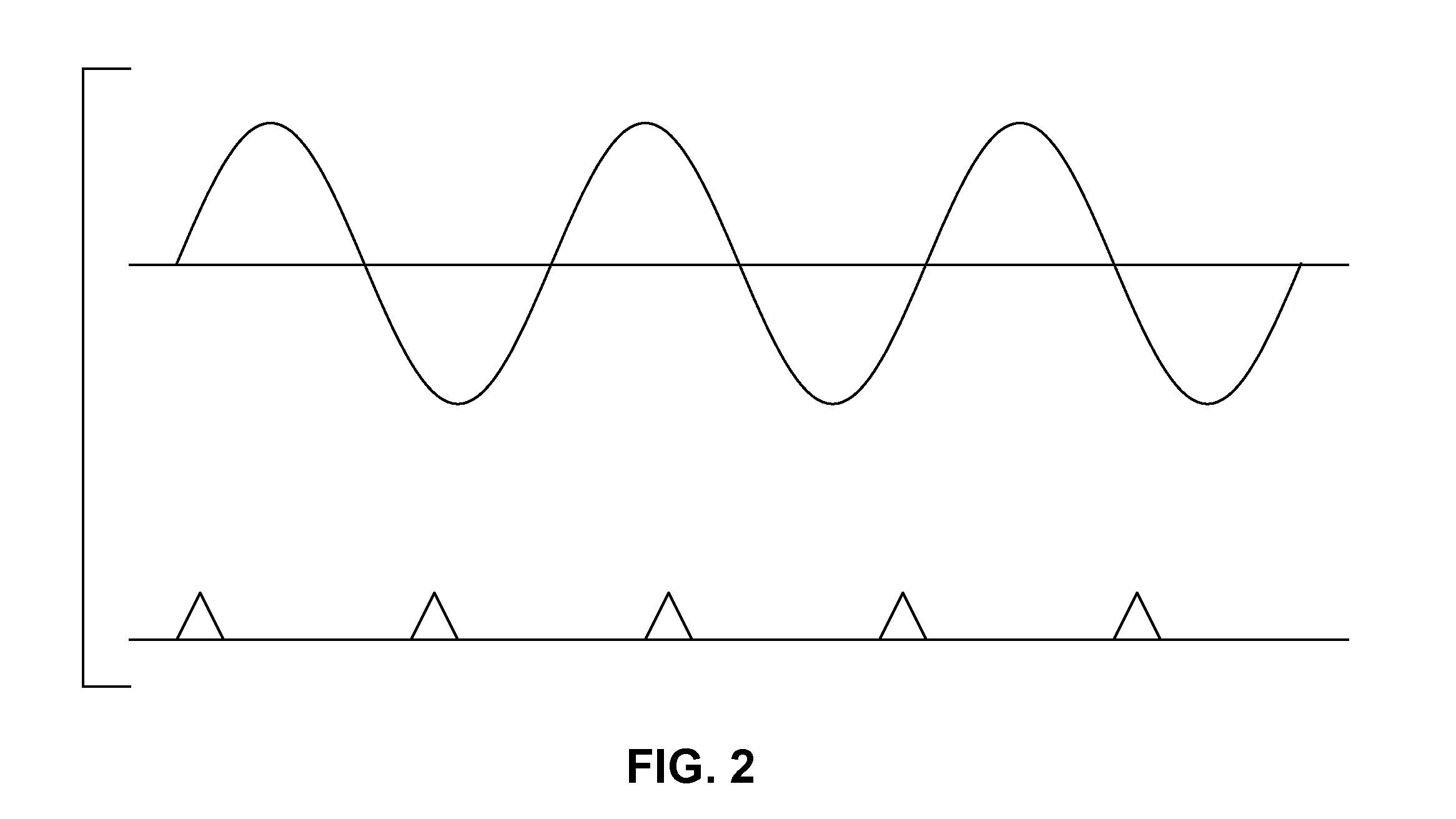Mobile devices and methods employing haptics
a technology of haptic actuators and mobile devices, applied in the direction of repeater circuits, instruments, and tactic signalling systems, can solve the problems of limited popularity, increased widespreadity, and limited use of tactic actuators in consumer devices, and achieve the effect of facilitating its purchas
- Summary
- Abstract
- Description
- Claims
- Application Information
AI Technical Summary
Benefits of technology
Problems solved by technology
Method used
Image
Examples
Embodiment Construction
[0043]One aspect of the present technology concerns a mobile device, e.g., an iPhone or Nokia phone, which recognizes a physical object in its environment, and identifies and renders a particular haptic signature corresponding to that object.
[0044]Recognition can be performed by known techniques, including visual search technology. Nokia's Point & Find application is illustrative. Such technology can distinguish, for example, two different books, or two different cans of soda, by reference to their visual appearance.
[0045]Nokia's technology employs a concept of “Worlds,” which generally correspond to the class of objects or activities in which the user is interested. One “world” is “Shopping.” Another is “Movies.” Others include “City Guide,” and “2D Barcode,” etc. Users can define other worlds to suit their preferences.
[0046]The user may be interested in books, and set the phone to a “Book” world. If a book is recognized within the phone's field of view, the phone gives a distincti...
PUM
 Login to View More
Login to View More Abstract
Description
Claims
Application Information
 Login to View More
Login to View More - R&D
- Intellectual Property
- Life Sciences
- Materials
- Tech Scout
- Unparalleled Data Quality
- Higher Quality Content
- 60% Fewer Hallucinations
Browse by: Latest US Patents, China's latest patents, Technical Efficacy Thesaurus, Application Domain, Technology Topic, Popular Technical Reports.
© 2025 PatSnap. All rights reserved.Legal|Privacy policy|Modern Slavery Act Transparency Statement|Sitemap|About US| Contact US: help@patsnap.com



